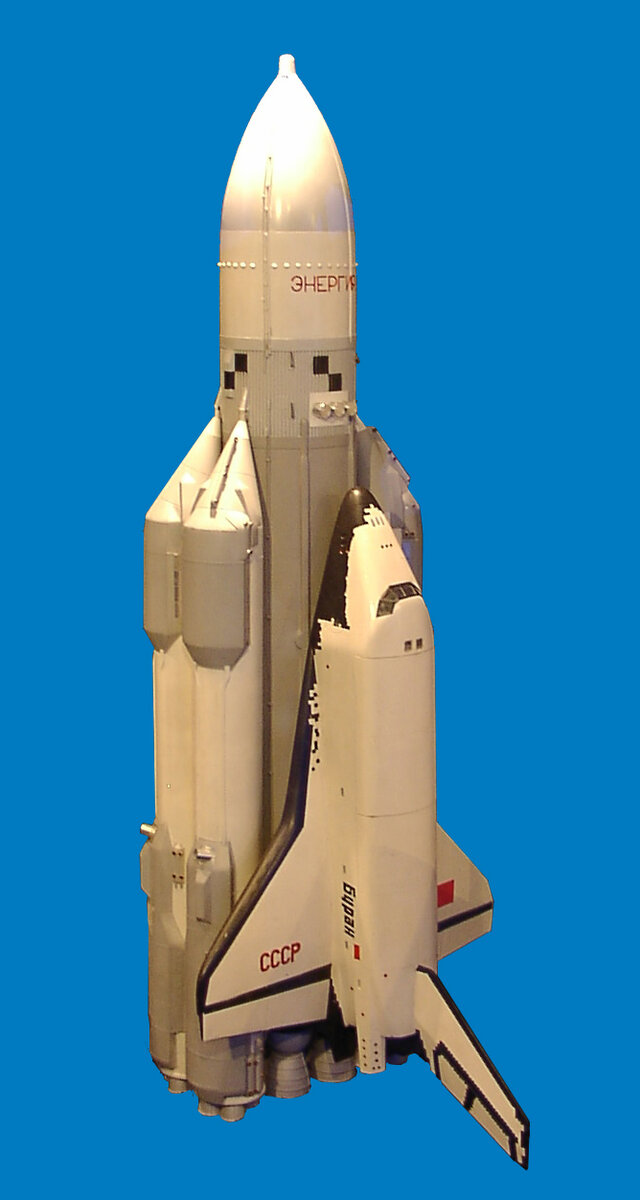The Rise and Fall of the Soviet Buran Space Shuttle Project
Written on
Introduction to the Buran Project
The Soviet Union's Buran space shuttle project was a significant response to the U.S. Space Shuttle program, announced in 1972. This initiative aimed to develop four shuttles to conduct approximately 60 missions annually. Its primary objectives included enhancing cargo capacity for orbital launches, lowering transportation costs, enabling the return of cargo from space, and providing a means for satellite maintenance in orbit.

Space Shuttle Source: ru.wikipedia.org
The Soviet perspective on the American initiative was far from optimistic, particularly due to the military's involvement in the program. The USSR suspected that these shuttles had potential military applications, prompting them to carry out extensive evaluations of the new technology. These assessments suggested that the shuttles could be utilized for military operations, such as capturing Soviet satellites or deploying thermonuclear devices while evading anti-missile defenses.
Development of the Buran
In reaction to these concerns, the USSR initiated the "Energiya-Buran" program to create its own reusable spacecraft. At that time, the Soviet Union had already been working on the "Spiral" program for reusable vehicles. However, due to the significant advancements made by the Americans, it proved more efficient to replicate certain American designs rather than continue developing "Spiral." The USSR's lack of clarity regarding the purpose of the shuttles can be summed up as a need for a versatile spacecraft: while they were uncertain about its exact applications, they believed that they would define its use once it was built. Consequently, while Buran bore a striking resemblance to its American counterpart externally, it featured a different engine system, control mechanisms, and autopilot.


Buran Source: www.roscosmos.ru
Buran achieved its maiden flight in 1988 without a crew, with plans for a second launch in 1990 or 1991. However, following the dissolution of the USSR, the project faced a suspension that ultimately led to its cancellation in 1993. By that time, the financial investment in the "Energiya-Buran" program had reached approximately 2 trillion rubles in today’s currency.
Reasons Behind the Project's Closure
Several factors contributed to the termination of the "Energiya-Buran" initiative, many of which were influenced by lessons learned from the American Space Shuttle program:
- High Operating Costs: By the time Buran was launched, the exorbitant costs associated with operating American shuttles had become evident, and they fell short of their initial promise for affordable space travel.
- Emerging Alternatives: New rockets capable of delivering larger payloads to orbit emerged, diminishing the shuttles' competitive edge.
- Limited Military Use: The more the shuttles were utilized, the clearer it became that their military applications were minimal; in fact, they conducted only one mission with a military objective, which involved launching a covert reconnaissance satellite.
As a result, the necessity for Buran diminished significantly; the competition it was meant to face had vanished, and it offered no substantial advantages to the Soviet space agenda.

A model of the Buran spacecraft and the Energia rocket carrier. Here, the design of the rocket carrier is clearly visible. Source: ru.wikipedia.org
Simultaneously, the financial strain of constructing Buran became increasingly burdensome for the Soviet budget, especially during the late 1980s. Discussions about reviving the Buran program have arisen in Russia, but they have not progressed beyond mere talk. The primary reason is that Buran became outdated over the years, and the need for in-orbit satellite repairs has diminished; nowadays, launching and deploying new satellites is often more cost-effective than sending a vessel for repairs.
Clape if you want to see more articles about space in your feed!
Subscribe to our channel and ask your questions, which I will answer in the following articles.
If you like my work, you can support me by becoming a medium member using this link. It will cost only $5 monthly and help us create even better content.
The Soviet Buran Project's Legacy
Did The Soviets Build A Better Space Shuttle? The Buran Story - YouTube
Buran's story echoes with questions about its potential and the course of space exploration.
The Buran: The Soviet Union's Suspiciously Familiar-Looking Space Shuttle - YouTube
The Buran project serves as a reminder of the complexities and challenges in the race for space supremacy.